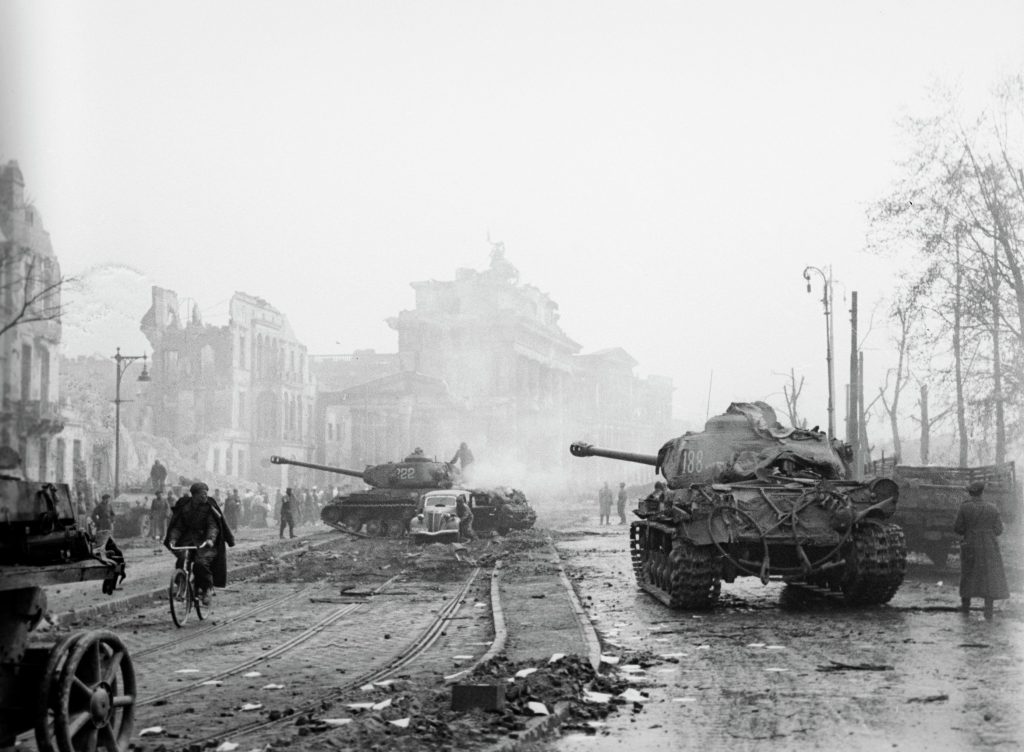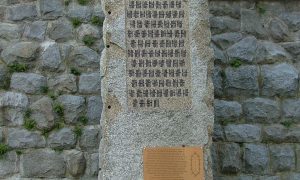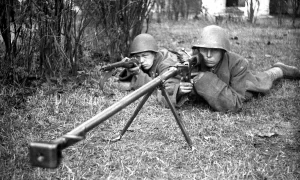The storming of Vienna is one of the offensive operations ending the Great Patriotic War. It was part of the 1945 Vienna offensive, during which Soviet troops captured the capital of Austria, clearing it of Nazi troops. The operation lasted 8 days – from 5 to 13 April 1945.
Vienna was defended by 8 tank, 1 infantry divisions and up to 15 separate infantry battalions. The German command on the approaches to the city and in the city itself prepared numerous defensive structures in advance. Anti-tank ditches and installed anti-tank and anti-personnel obstacles and barriers. The streets were blocked by barricades and rubble. Many buildings were equipped with firing points. The German command sought to turn Vienna into an impregnable fortress. The command of the Wehrmacht attached great importance to the retention of Vienna and its economic region. April 6, 1945 Hitler wrote: “The oil field in the Vienna region is of decisive importance for the further conduct of the war”.
Vienna was the last bastion in the Nazi defense on the outskirts of Germany’s southern regions. Therefore, the battles for the city were very stubborn. According to the plan of the Headquarters of the Supreme High Command, the liberation of Vienna was to be carried out by the troops of the right wing of the 3rd Ukrainian Front (4th, 9th Guards and 6th Guards Tank Armies, 1st Guards Mechanized Corps and 18th Tank Corps) and the left wing 2nd Ukrainian Front (46th Army, 23rd Tank and 2nd Guards Mechanized Corps). Air support was provided by units of the 5th and 17th air armies. Wishing to preserve the city, its historical monuments and prevent unnecessary sacrifices, Tolbukhin on April 6, 1945 appealed to the inhabitants of Vienna with an appeal to stay in their places, in every possible way to prevent the Nazis from destroying the city and to provide assistance to Soviet troops. But only a few of the inhabitants of Vienna responded to the call.


Storming of Vienna
On the morning of April 6, the troops of the 4th and 9th Guards. armies from the east and south began the assault on Vienna. At the same time, the connections of the 6th Guards tank army bypassed the city from the west, trying to prevent the withdrawal of the Nazis to the west. Tank troops crossed the wooded area of the Vienna Woods. However, despite the harsh terrain and fierce German resistance, the tanks bypassed Vienna and reached the Danube on April 7, cutting off the Nazis’ escape route. The city was surrounded on 3 sides. The troops of the 3rd Ukrainian Front fought for every quarter of the city and against houses turned into strong strongholds. A group of scouts, risking their lives, under heavy fire from the Nazis, demined the Reichsbrücke… For this feat, they were all awarded the title of Hero of the Soviet Union. Clearing one block after another, Soviet troops cut the Vienna garrison of the Nazis into separate groups and began to destroy them. By April 10, Soviet troops, advancing from the south and east, united with the units storming the city center. The German garrison was squeezed from the south and east by the 4th army, and from the south-west and west by the 9th and 6th tank guards armies, But the Nazis were not going to surrender. On the night of April 11, the 4th Guards Army began crossing the Danube Canal. On April 13, the Nazi resistance was broken.


The results of the assault
As a result of the storming of Vienna, Soviet troops completely liberated it, reached the St. Pölten line and entrenched themselves further south. And the troops of the left wing of the 3rd Ukrainian Front continued their offensive in the general direction of Graz.














Pingback: The Soviet Danube Flotilla - Real History Online